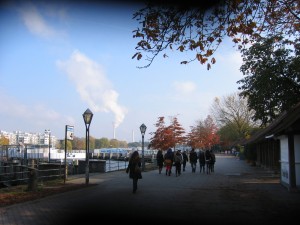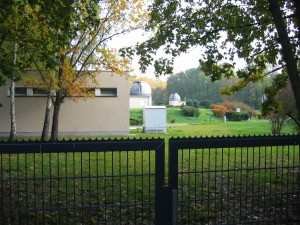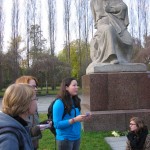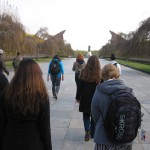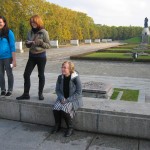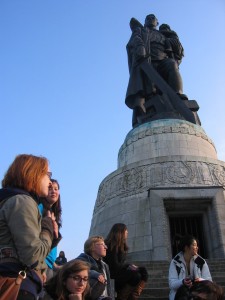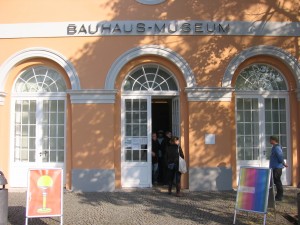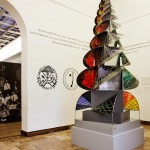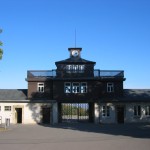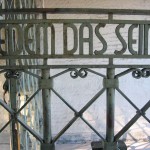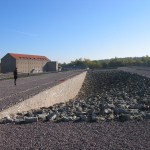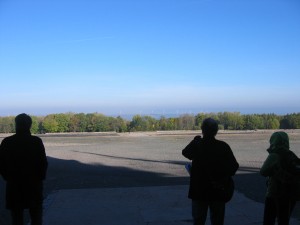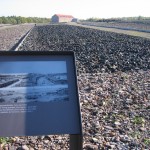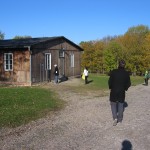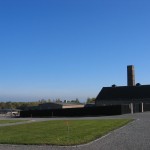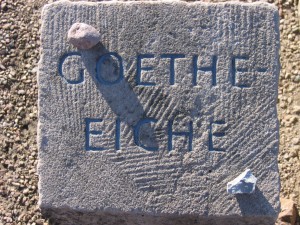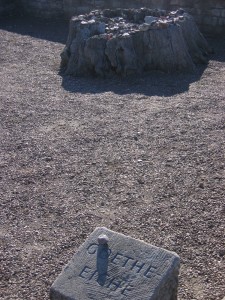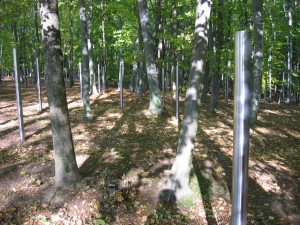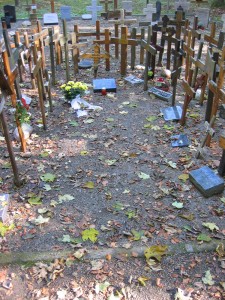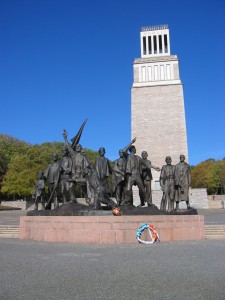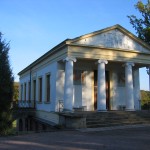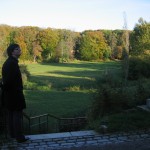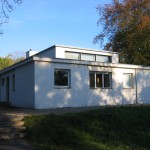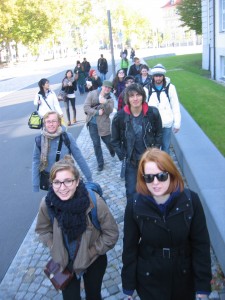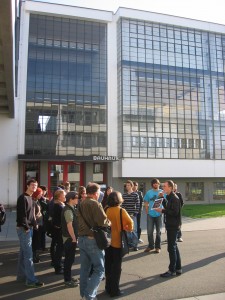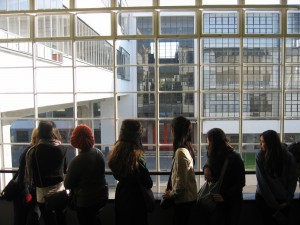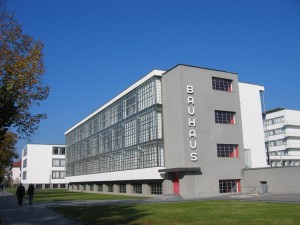Treptower Park with Anna, Mariah and Janet
The student tour this week brought us to Treptower Park, home to …
… houseboats (one of three colonies in Berlin) …
An observatory built for a world’s expo in the park around the turn of the century, and later supposedly used by Einstein …
… and an absolutely massive Soviet World War II memorial and cemetery. Since the park lies in what was formerly East Berlin, it was a natural choice for the Soviets to honor 7,000 of their men who died here. The site is now under the official protection and care of the German government, thanks to a line in the treaty signed by the Soviets in 1989.
The main attraction is a 38-foot statue of a Soviet solder saving a child, posed over a broken swastika. Though it’s a bit over the top, one can’t help but think about the staggering number of men buried here. It’s another sobering facet of Berlin’s complex, and often tragic, history.
A trip to Weimar & Dessau
This weekend we traveled to the beautiful city of Weimar, home of Goethe, Schillar, Liszt, and the birthplace of the Bauhaus! Our first stop on Friday afternoon was the Bauhaus museum – a small but unique little space with treasures from the first years of the school’s existence. Unfortunately the Bauhaus school was forced to leave Weimar after the Nazi party gained power in the state of Thüringen in 1924.
This opened a difficult chapter in Weimar’s history, and on Saturday we visited the nearby site of Buchenwald concentration camp.
The most striking thing one finds on entering the camp is the view: the camp is set in the middle of the forest (Buche means “beech” and Wald means “woods”), on a hill that allows a view across the valley. It’s difficult to believe that such horrible things could transpire amidst such natural beauty.
The original barracks are no longer extant – most are now marked with dark loose stones, but one has been rebuilt in its original form. One of the few other buildings still standing on the grounds is the crematorium, which was strangely located adjacent to a little petting zoo built for the children of the SS.
The Goethe Eiche – Goethe’s Oak – was an oak tree left standing in the camp by the SS. The prisoners named it in remembrance of Goethe’s trips to this same forest. It was damaged in an Allied bombing in 1944 and subsequently chopped down.
Buchenwald was also used as a Soviet internment camp after the war. It’s thought that about 7,ooo people died during this time in the camp’s history, and they were buried in unmarked graves in the woods surrounding the site. Because Thüringen became part of East Germany, the deaths were not acknowledged during the Cold War. The fall of the Berlin Wall finally allowed the victims’ families to speak up and publicly remember their relatives.
The Soviets left another highly visible legacy: a huge memorial to the camp’s liberation, on a hill overlooking Weimar. Buchenwald’s many layers of tragic history gave us much to consider …
The class was free to spend the rest of the day exploring the town. Chance and I took a stroll through the park and admired the “Roman House,” the amazing landscape and the first Bauhaus demonstration house, the Haus am Horn.
Today we left Weimar and headed back to Berlin, with a stop in Dessau to visit the most famous site of the Bauhaus, their school building, designed by Walter Gropius and built in 1925-6. We got a fantastic tour from a very knowledgeable and enthusiastic guide, and I think our students might almost be convinced that Modernism isn’t all horrible … (those of us who study architecture are already sold).
We couldn’t have asked for a more lovely day to see this truly seminal piece of architecture. This week we dive into the study of the specter that haunts both the history of the Bauhaus and Buchenwald: the Nazis and their influence on Berlin and Germany.
tags
the author
I'm a doctoral student at CUNY Graduate Center. I'm thrilled to be teaching the CHID Berlin program with Prof. John Toews! You can contact me at naraelle [at] gmail.com, or find out more about me at www.naraelle.net.
Blogroll
- Annie Holden's blog
- Cassie Hoeprich's blog
- Dominic Barrera's blog
- Janet Williams's blog
- Mariah Alderete's blog
- Melissa Au's blog
- Robert Hampton's blog
- UW Students Study Abroad Our students Natalie and Cassie are contributing to the official IPE student blog this fall!



